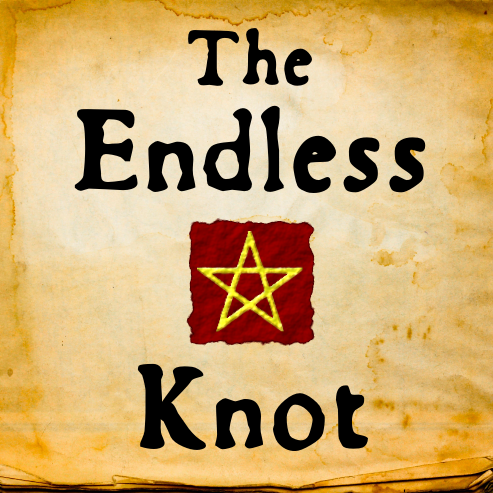Here's my latest Endless Knot video, all about the origin and history of the word "album":
So first of all, a programming note: we're taking a break this week from the "ways of knowing" mini-series, which was the focus of the last two videos. We'll come back to that soon with upcoming videos about metaphor and narrative. But this week, I wanted to launch what will be the ongoing series of videos you'll see on my channel, videos that cover the often surprising origins and histories of words. This week's word is album.
The idea here is to look for the hidden connections with words. Words that are etymologically connected even if they don't look like it. Words with particular historical and cultural connections that are made the richer by knowing the formation and history of the word itself. The word and its origin are a jumping off point to then explore the related history and culture, and I hope by rooting the word in its context and connecting the history to language, both become more memorable. In a lot of ways, this is where the real idea for this channel started, since it was something I could do on an ongoing basis, and since at heart I'm a real word nerd.
This particular video was inspired by noticing that the White Album was a redundantly repetitive name, and everything else followed from there. It's also a bit of a "get off my lawn, you youngsters" moment for me as I lament the diminution of album art, but actually I like electronic albums as much as the next guy and mostly listen to music on my iPhone anyway. Still, it's a nice bit of historical circularity that the signing of record albums brings it back to the album amicorum.
Now there are number of different ways to track down these sorts of connections. Of course there is the well-known and authoritative Oxford English Dictionary (OED), which is excellent for tracking the changes in words and how they are used over the course of English history. It doesn't, however, always give the deeper etymologies and more distantly related words. For that, one of the best bets is American Heritage Dictionary (AHD), and in particular the excellent Indo-European Roots appendix by Calvert Watkins. This appendix lists all the Proto-Indo-European (PIE) roots that make their way into English, through a variety of intermediary languages and in a variety forms, so it's a good way of finding distantly related words. Also useful on the Indo-European front is the Indo-European Lexicon from the University of Texas at Austin, which lists the derivative words found in many languages that come from PIE roots, and it's nicely cross-indexed in a number of different ways (by PIE root, by derivative language, by semantic field), and both this website and the Calvert Watkins appendix give cross indexes to the older, very authoritative work on PIE vocabulary by Julius Pokorny, Indogermanisches Etymologisches Wörterbuch. (Trivia fans: Pokorny is apparently mentioned in James Joyce's Ulysses!) Another excellent tool for tracking down surprisingly related words is John Ayto's excellent Dictionary of Word Origins. It's by no means comprehensive, but has interesting discussions and useful cross references.
Other etymological resources I use frequently are the excellent Online Etymology Dictionary by Douglas Harper, The Oxford Dictionary of English Etymology by C.T. Onions, and Webster's Dictionary of Word Origins. And for names, there's Behind the Name. For specific specific stages of English there are the older Old English dictionaries by J.R. Clark Hall and by Bosworth & Toller, and the still-in-progress Dictionary of Old English (where I worked as a research assistant while I was a graduate student), and the Middle English Dictionary. For other languages, there are the Old Norse dictionaries by Zoëga and Cleasby & Vigfusson, and for Latin and Greek the Logeion website (and handy iOS app) which contains a variety of Greek and Latin dictionaries, including the authoritative Lewis & Short Latin and Liddell & Scott Greek dictionaries.
And of course there are many other popular word history books, such as Word Histories and Mysteries from the AHD, David Crystal's The Story of English in 100 Words, Mark Forsyth's Etymologicon (and blog), and many, many others. Also influential to me in the past was the entertaining Podictionary podcast by Charles Hodgson, but it's now sadly discontinued.
In keeping with the album theme of this video, I've uploaded some of the music I've created for the channel to SoundCloud as a kind of "album release" (get it?), so if you're into listening to background/theme music you can find that here. I've had a lot of fun recording music (another hobby of mine), and put a lot of effort into these recordings which in the end can't really be heard that clearly over my talking, so I figured it would be a good idea to do something else with them as well.
And finally, I didn't actually mention all the English words related to album in the video -- there are a few others, some more obscure and some more common. So my question to you, dear readers, is, can you think of any others? Answers in the comment section if you care to!



